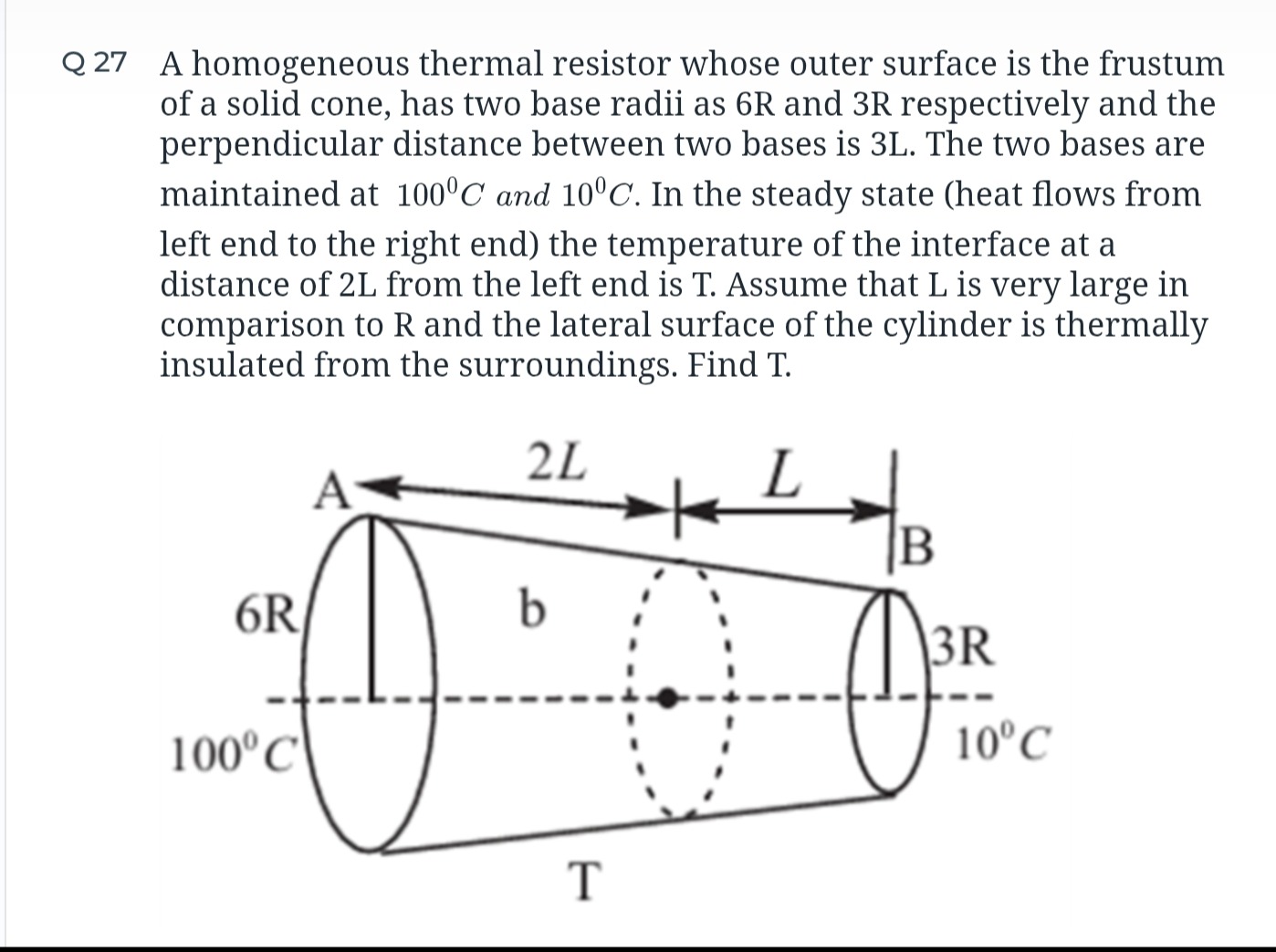Question
Question: A homogeneous thermal resistor whose outer surface is the frustum of a solid cone, has two base radi...
A homogeneous thermal resistor whose outer surface is the frustum of a solid cone, has two base radii as 6R and 3R respectively and the perpendicular distance between two bases is 3L. The two bases are maintained at 1000C and 100C. In the steady state (heat flows from left end to the right end) the temperature of the interface at a distance of 2L from the left end is T. Assume that L is very large in comparison to R and the lateral surface of the cylinder is thermally insulated from the surroundings. Find T.

55
60
70
75
55
Solution
In steady state, the rate of heat flow (Q) is constant. The radius of the frustum at a distance x from the left end is r(x)=6R−LRx. The cross-sectional area is A(x)=πr(x)2. The heat flow equation is Q=−kA(x)dxdT.
Integrating from x=0 (T1=100∘C) to x=2L (T): ∫100TdT=−kπQ∫02L(6R−LRx)2dx T−100=−kπQ[RL6R−LRx1]02L T−100=−kπRQL(4R1−6R1)=−kπRQL(12R3−2)=−12kπR2QL (1)
Integrating from x=2L (T) to x=3L (T2=10∘C): ∫T10dT=−kπQ∫2L3L(6R−LRx)2dx 10−T=−kπQ[RL6R−LRx1]2L3L 10−T=−kπRQL(3R1−4R1)=−kπRQL(12R4−3)=−12kπR2QL (2)
Equating (1) and (2): T−100=10−T 2T=110 T=55∘C.
